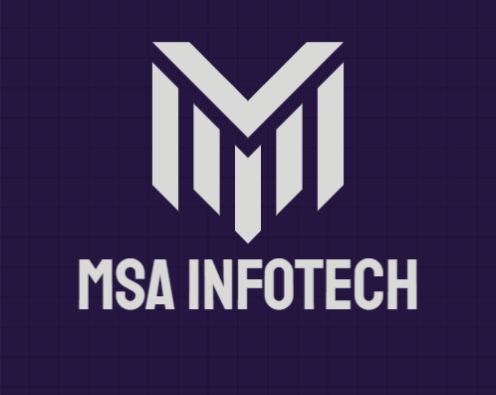Building a Scalable E-Commerce Platform with .NET Core
- .Net
- November 26, 2024
-
Building a Scalable E-Commerce Platform with .NET Core
Introduction
The e-commerce industry requires highly scalable, secure, and performant platforms to handle large volumes of transactions and traffic. For one of our clients, we built a modern e-commerce solution using .NET Core to meet their business needs. This blog showcases how .NET Core empowered the client to achieve scalability, flexibility, and seamless user experience.

Client Overview and Challenges
Client Overview
The client is a mid-sized e-commerce business specializing in fashion and accessories. They serve customers across multiple regions and process over 5,000 daily transactions during peak sales periods.
Challenges
- Outdated Legacy System: Their existing platform was built on a monolithic architecture, leading to slow response times and scalability issues.
- Limited Mobile Support: The platform lacked responsive design, resulting in poor mobile user experiences.
- High Maintenance Costs: Frequent downtimes and complex workflows increased operational costs.
- Inflexibility: Adding new features or scaling during peak times required extensive development and downtime.
- Security Concerns: The platform lacked robust security measures to handle sensitive customer and payment data.
Solution: E-Commerce Platform with .NET Core
We proposed rebuilding their platform using .NET Core to create a modern, modular, and highly scalable solution. Here’s how the system was implemented:
1. Microservices Architecture
- Problem: The monolithic architecture hindered scalability and performance.
- Solution:
- We migrated the platform to a microservices-based architecture using .NET Core. Key modules like product catalog, user management, order processing, and payment integration were designed as independent services.
- Services communicated via lightweight APIs using ASP.NET Core Web API and gRPC.
Outcome:
- Improved scalability and reliability, allowing the client to handle up to 50,000 transactions/day during sales events.
2. Cross-Platform Support
- Problem: Limited compatibility with modern devices.
- Solution:
- Using .NET Core’s cross-platform capabilities, we ensured the platform worked seamlessly on Windows, Linux, and macOS.
- Implemented a responsive UI using Blazor WebAssembly for consistent user experiences across mobile, desktop, and tablets.
Outcome:
- Mobile conversion rates improved by 30%, and user engagement increased significantly.
3. High Performance and Scalability
- Problem: Slow page load times during peak traffic.
- Solution:
- Leveraged ASP.NET Core’s Kestrel server for high-performance HTTP request handling.
- Used Azure App Service with horizontal scaling to handle traffic spikes dynamically.
- Optimized database queries with EF Core and implemented caching using Redis.
Outcome:
- Page load times reduced from 5 seconds to 1.2 seconds, enhancing customer satisfaction.
4. Secure Payment Gateway Integration
- Problem: Security vulnerabilities in handling payment data.
- Solution:
- Integrated secure payment gateways like Stripe and PayPal using .NET Core APIs.
- Implemented IdentityServer4 for authentication and authorization, enabling features like multi-factor authentication (MFA).
- Encrypted sensitive data using Data Protection API (DPAPI) and followed OWASP guidelines for secure coding practices.
Outcome:
- The platform achieved PCI DSS compliance, ensuring safe transactions and building customer trust.
5. Real-Time Inventory Management
- Problem: Inventory synchronization delays caused overselling and dissatisfied customers.
- Solution:
- Designed a real-time inventory tracking system using SignalR in .NET Core for instant updates across warehouses, admin dashboards, and customer interfaces.
- Integrated the system with the client’s existing ERP solution.
Outcome:
- Inventory discrepancies reduced by 80%, and customer complaints dropped significantly.
6. Advanced Search and Recommendation Engine
- Problem: Customers faced difficulties finding relevant products.
- Solution:
- Built an intelligent search engine using Azure Cognitive Search, integrated with .NET Core.
- Implemented a recommendation system using ML.NET, which suggested products based on browsing history and purchase patterns.
Outcome:
- Search accuracy improved, and conversion rates increased by 20%.
7. Streamlined Deployment with DevOps
- Problem: Frequent downtimes during feature updates.
- Solution:
- Automated CI/CD pipelines using Azure DevOps for seamless deployment.
- Used Docker containers to isolate services, enabling zero-downtime deployments.
Outcome:
- Deployment times reduced by 70%, and the platform achieved 99.9% uptime.
Results Achieved
- Improved Performance: The platform now handles 10x more traffic during peak times without performance degradation.
- Cost Efficiency: Hosting costs reduced by 40% due to optimized cloud resource utilization.
- Enhanced Security: Achieved compliance with industry standards like PCI DSS and GDPR.
- User Satisfaction: Customer satisfaction scores improved from 78% to 92% within 3 months of launch.
- Business Growth: The client expanded to new regions, resulting in a 25% revenue increase.
Use Case: Flash Sale Event Management
Scenario:
During festive seasons, the client conducts flash sales, where traffic surges by 300%.
Implementation:
- The platform auto-scales using Azure resources.
- Redis caching and optimized database queries ensure high-speed responses even under heavy loads.
Outcome:
- The client successfully conducted a flash sale with 0% downtime, selling over 20,000 items within an hour.
Implementation Process
- Discovery and Planning: Collaborated with stakeholders to identify pain points and gather requirements.
- Development: Built and tested each microservice independently to ensure modularity.
- Deployment: Deployed the solution in phases, starting with pilot testing.
- Training and Support: Provided user training and 24/7 technical support during the initial months.
Start Your Data Journey Today With MSAInfotech
Take the first step towards data-led growth by partnering with MSA Infotech. Whether you seek tailored solutions or expert consultation, we are here to help you harness the power of data for your business. Contact us today and let’s embark on this transformative data adventure together. Get a free consultation today!

We utilize data to transform ourselves, our clients, and the world.

Partnership with leading data platforms and certified talents






